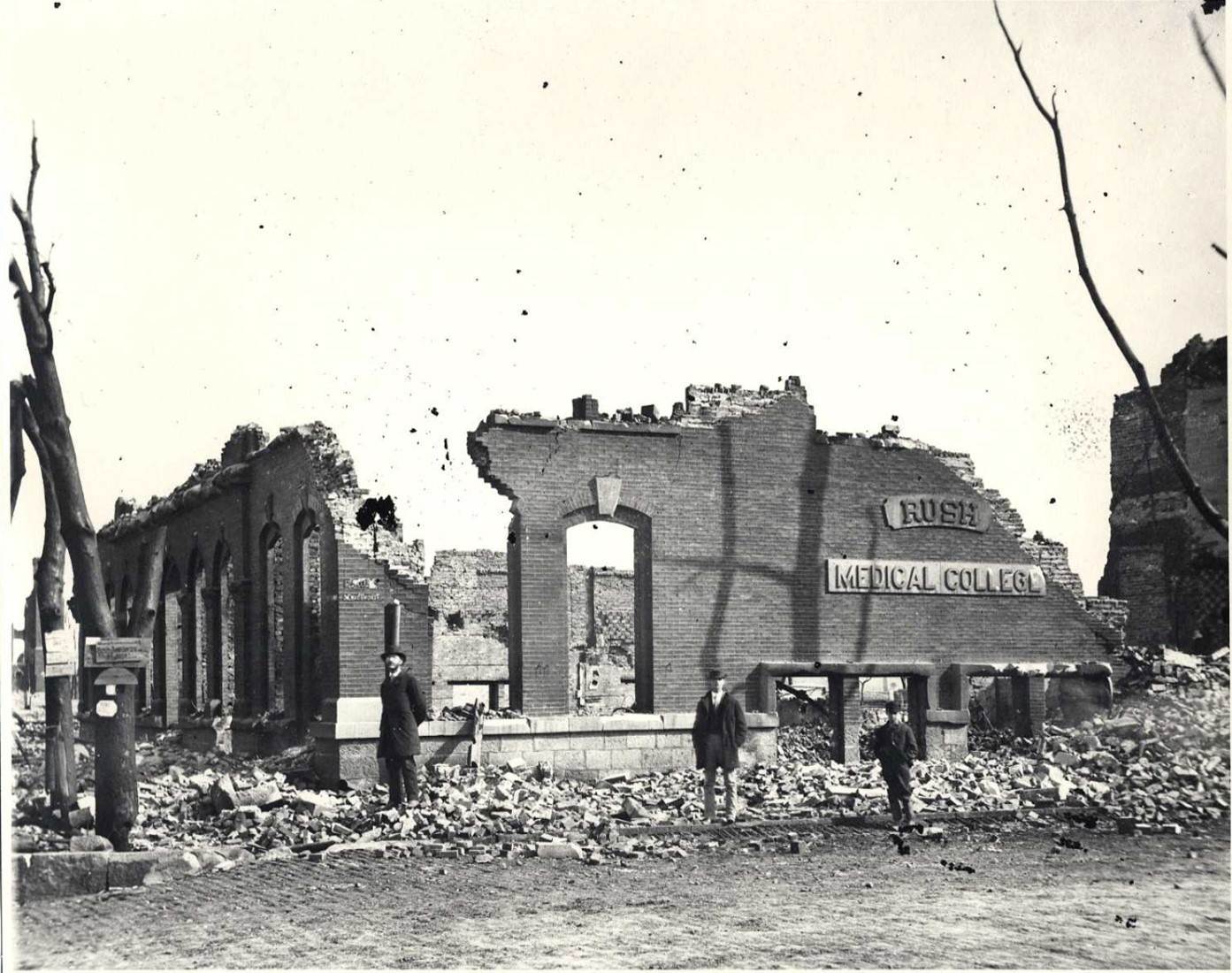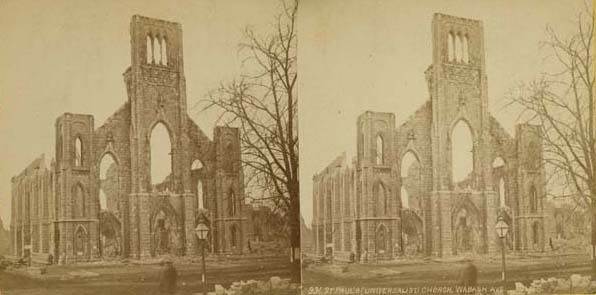By Jacob K. Friefeld
The avenue was a scene of desolation. The storm of falling fire seemed to increase every second, and it was as much as we could do to protect ourselves from the burning rain and guide the horse through the flying people and hurrying vehicles. Looking back through Washington Street toward the Opera House, I saw smoke and flames pouring out of State Street, from the very point we had just left, and the intervening space was filled with the whirling embers that beat against the houses and covered the roofs and window-sills. It seemed like a tornado of fire. -- Alexander Frear, New York World Herald, October 15, 1871
The “tornado of fire” that New York politician Alexander Frear described devastated Chicago. The fire began Oct. 8 on the city’s West Side, burning a swath of destruction to the river at Adams Street, where it proceeded to jump the water to the impoverished Conley’s Patch neighborhood. Before the city stopped burning, the fire had laid waste to more than 17,000 buildings.
 Rush Medical College building after the Great Chicago Fire (Abraham Lincoln Presidential Library and Museum)
Rush Medical College building after the Great Chicago Fire (Abraham Lincoln Presidential Library and Museum)
Chicago had grown substantially in the decades leading up to the fire. In the early 1800s, U.S. citizens on the East Coast knew the place that would become Chicago only as part of a vast Northwest Territory. The territory was known, not for big business, but for traders like John Kinzie who had joined a small village and created a prosperous business connecting Euro and Native American villages in the area.
By the 1830s, Eastern money started pouring in from businessmen like William Ogden, who supported the construction of the Illinois and Michigan Canal and subsidies for railroads. By the end of the decade, Ogden had become the largest landowner in Chicago and had defeated John Kinzie to become the first mayor of the city.
The mid-1800s saw Chicago welcome far more men of the Ogden variety than the Kinzie. Both the violent dispossession of American Indians from their land and Market Revolution fueled this transformation from a place of small traders to businessmen. The Market Revolution tore businesses away from small communities and family farms, and saw them reordered into mills, slaughterhouses, and manufacturing plants in emerging cities like Chicago. The arrival of railroads only hastened the city’s expansion.
With a population near 110,000 on the eve of the Civil War, Chicago was an upstart city in competition with places like St. Louis and Cincinnati to become the great city of the West. Government contracts during the war stimulated Chicago’s already growing industries. The growth continued after the war, and by 1870 Chicago almost tripled its population, boasting nearly 299,000 residents.
 Like so many other buildings after the fire, the outer walls were all that remained of Chicago’s St. Paul’s Universalist Church (ALPLM).
Like so many other buildings after the fire, the outer walls were all that remained of Chicago’s St. Paul’s Universalist Church (ALPLM).
The fire in 1871 seemed as if it would undo the previous decades of urban growth. The flames destroyed the homes of about 100,000 Chicagoans — a third of the population. It killed at least 300 and left damages estimated at 196 million dollars. The scope of the fire stunned Chicagoans, but a shocked world poured their charity into the city’s rebuilding efforts. Resurrected, the city reached one million residents by 1890, but the Great Fire remained seared in the memories of those who lived through it.
Also This Month In Illinois History...
- October 5, 1868: The cornerstone of the Illinois State Capitol Building was laid.
- October 14, 1908: The Chicago Cubs won game five of the World Series, finishing off the Detroit Tigers and securing back-to-back championships.
- October 15, 1858: The Lincoln-Douglas debates concluded with an appearance in Alton. Earlier in the month, Lincoln and his Senate rival had debated in Galesburg and Quincy.
- October 16, 1854: Abraham Lincoln delivered his Peoria speech outlining his objections to the Kansas-Nebraska Act. This revitalized Lincoln’s political career and within six years he would become the Republican presidential nominee.
Jacob K. Friefeld is a Research Historian at the Abraham Lincoln Presidential Library and Museum.